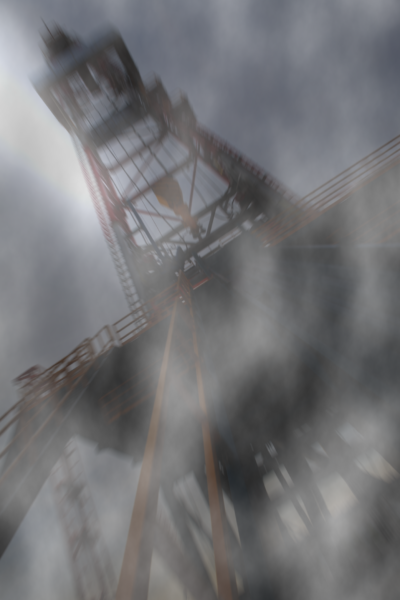
August 9th, 2018 marks the 70th anniversary of the initial air date of “The Thing on the Fourble Board,” generally considered one of the greatest works of classic radio drama ever produced.
This being a relatively rare occasion where I can share a story without worrying about any apparent copyright violations, so I’ve made it available below for anyone who hasn’t heard it (or heard of it) before.
For those without the time or inclination, the story can be summarized as a derrick-hand recounting an encounter he and his fellow “roughnecks” had with something mysterious, bizarre and ultimately dangerous on an oil derrick (a fourble board is apparently “a platform at a height of 80 feet or more above the floor of an oil derrick“).
The narrator, Porky, seems to simply be telling the story in the 2nd person to the audience as though the listener is actually present before him, a common device in old-time radio horror programs. As the story progresses, however, we find out that his audience is someone who is part of the story, in a way that might not surprise savvier, modern listeners accustomed to this kind of tale, but that can still prove disturbing even to the jaded, and that certainly must have come as a gut-punch to many of the episode’s initial listeners back in 1948. Likewise, the strange-if-inspired wailing performed by Cecil H. Roy, (the voice actress most famous as the voice of Little Lulu and Caspar the Friendly Ghost in their respective cartoons), might make the titular “Thing” seem less intimidating and more childish and silly at first. By the time everything is discovered, however, we realize that this is a bit of a diversion, and the story is all the more chilling for it. Of course, I could be wrong; you might find her cries chilling from the moment you first lay ears on them.
At the risk of spoiling the classic radio drama above for any who just refused to listen to it, it has something in common with the other entry in today’s horror history post, Anthropophagus. That commonality is, of course, “monsters that eat people.” Instead of being some inexplicable creature from miles beneath the earth, however, the beast in Anthropophagus is merely a man. A mad one, driven so by loss and isolation, but a man just the same. This Joe D’Amato film is not notable for any storytelling flourishes or for even being good, but for its status as one of the more notorious “Video Nasties” banned by the Brits in the 80’s. Given that the film ends with the scene depicted on its infamous poster–that of the insane, cannibalistic villain gnawing on his own guts as he dies –it’s not all that surprising that the people behind the “Video Recordings Act” added it to their list. It also features a fetus being turned into raw veal, so, you know, for the curious, just know what you’re getting into.
Anthropophagus was released on this date in 1980 its home-country of Italy (a country that was really into cinematic cannibalism around that time; I think it even worked its way into their rom-coms).
